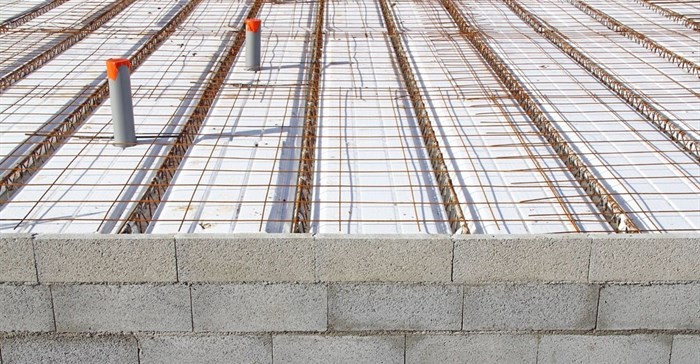This year's Budget Speech prioritised both national and provincial economic infrastructure requirements, which includes the reprioritisation of R600m to the Social Housing Regulatory Authority for investment in rental housing units. In addition, when talking to the persisting challenge of spatial transformation, Finance Minister Pravin Gordhan acknowledged the need for collaboration between government and the private sector.
These sentiments are echoed by Debbie Newton, senior executive in the Impact Funds business unit of Old Mutual Alternative Investments. OMAI manages the Housing Impact Fund South Africa (HIFSA) which finances the acquisition and construction of homes for sale and rent that are affordable to the lower and middle markets, as well as providing housing loans and rental accommodation for families and students.
“We welcome the renewed focus on social housing. While government is responsible for providing housing to those who cannot afford it, the private sector is able to provide a spectrum of products that people in the lower to middle income market are able to afford, either through rental or purchase. The private sector can and should also partner with government to create vibrant, economically integrated developments, and social housing is an excellent option in an integrated development.”
Savanna City
Newton refers to the HIFSA development located in the Midvaal Municipality, Savanna City, as a prime example of how the private sector is successfully partnering with the government. “As one of the country’s largest privately initiated urban lifestyle developments, the Savanna City Project aims to be an integrated, mixed-use development which will include social amenities, municipal infrastructure and commercial opportunities, and cater for various levels of affordability. Currently there is only provision for private ownership. Government finances fully subsidised houses for qualifying beneficiaries and the private sector finances houses for sale to the open market. In future rental options will be developed. The addition of social housing – subsidised rental accommodation for lower income levels – together with privately financed rental units for the middle income market will give completes a product offering that caters for both buyers and tenants at different income levels.
“Already, this development has doubled the size of the municipality, becoming a destination in itself and assisting Midvaal in dramatically reducing the housing backlog. Savanna City provides roughly 5000 fully-subsidised RDP houses, 6800 finance-linked houses (where government subsidises a certain portion of the bond), and 5700 houses that are fully bonded and made available to the open market," she says.
While Savanna City provides housing on a big enough scale to warrant the development of these onsite amenities, Newton says that this isn’t usually the case. “Generally, a successful residential project is developed quite close to existing amenities, especially public transport, and ideally employment opportunities. Having good schools, business opportunities and shopping centres close by also enhances a development as residents won’t have to spend a big portion of their income on transport.”
She adds that successful examples of these projects include HIFSA’s Buh-Rein Estate in Kraaifontein and Crystal Park in Benoni.
Obtaining land at the right price
Ian Mason, senior executive of Old Mutual's HIFSA, says that obtaining land at the right price continues to be one of the biggest challenges for affordable housing developers. “The land must be purchased at a price which enables us to develop it at a rate that is affordable for the target market, which is those whose monthly income is around R22,000 or less. This becomes particularly challenging when developing within closer proximity to the cities – something that is crucial in rectifying the historical apartheid spatial pattern of placing poorer people further away from amenities and opportunities.”
This, Mason says, is where government can play a vital role in the public-private affordable housing partnership. “If government were to make well-located land readily available to the private sector, the private sector is able to provide bridging finance, which is often a challenge for government, and can usually execute the project a lot quicker than government is able to.”
Another element which Mason says the private sector requires from the government with regards to big parcels of land is certainty on timing. “Government is usually responsible for providing the bulk services, and getting the decisions and approval around these services made timeously can be a major challenge. This delay is problematic because it is the opportunity cost and interest that builds up on land holdings that ultimately makes a development unaffordable for the target market.”
VAT relief
Tax relief for the development of affordable housing could also further strengthen the collaboration between government and the private sector. “In terms of the 2017 National Budget, if you buy an existing house, anything under R900,000 is exempt from transfer duty. However, when a new house is developed – even if it is developed for the purpose of affordable housing – VAT is imposed on the buyer, which makes a new house 14% more expensive than an equivalent existing house. This would obviously be a deterring factor for private sector affordable housing developers, which could be avoided through the implementation of VAT relief for these projects,” says Mason.
Newton concludes that HIFSA remains committed to working towards a sustainable solution to South Africa’s housing backlog. “We still have a way to go, particularly with the challenge of spatial transformation. However, if the obstacles which currently face the private sector continue to be addressed and government remains committed to a collaborative effort, the opportunities that exist in the space of affordable housing are bountiful.”































